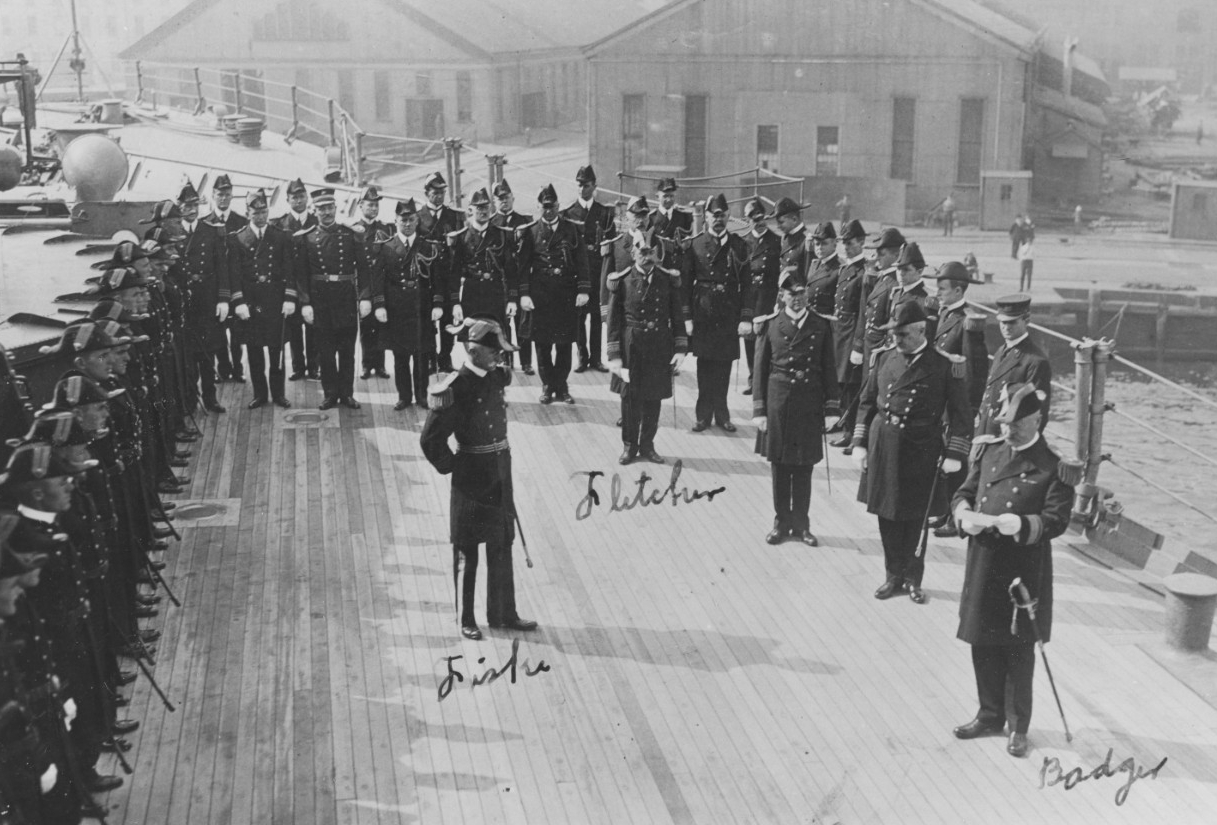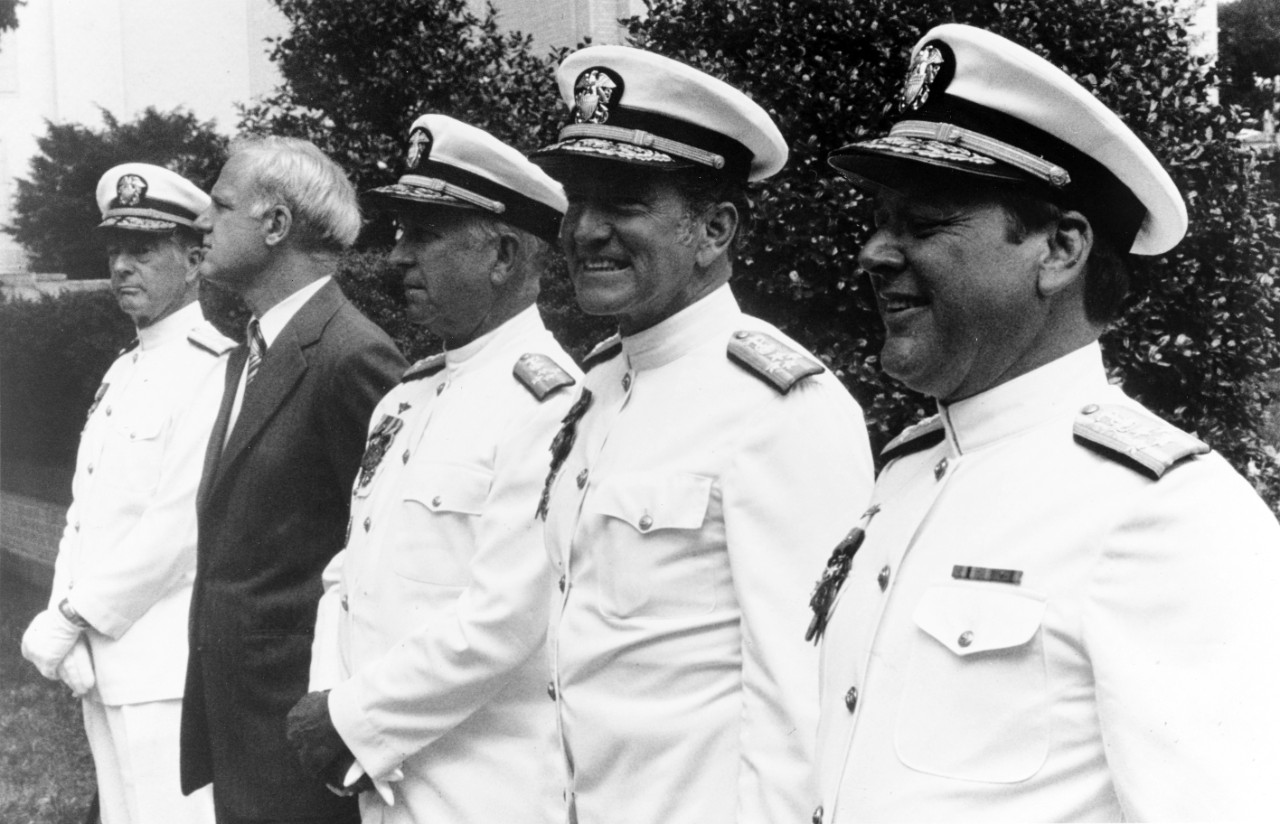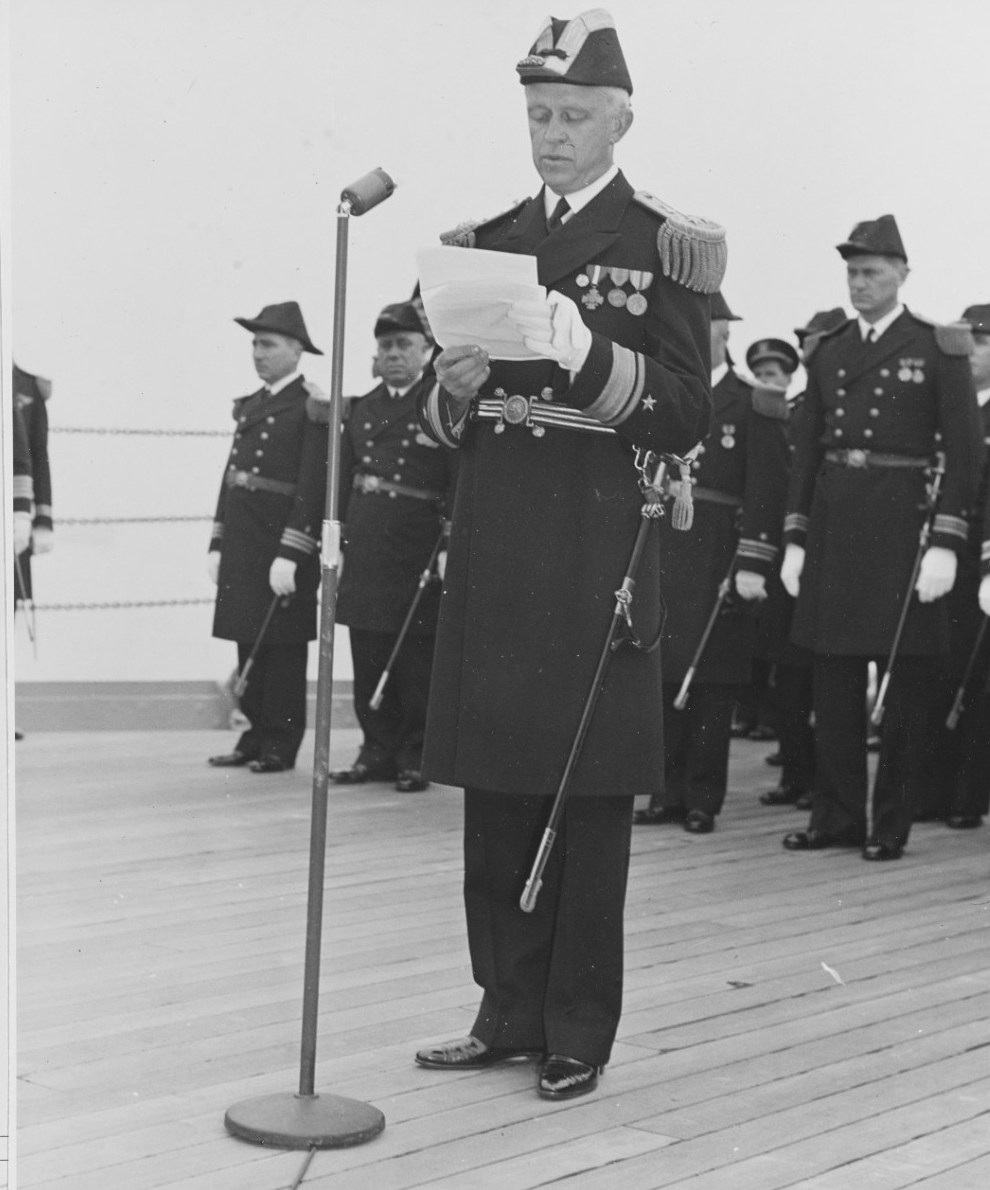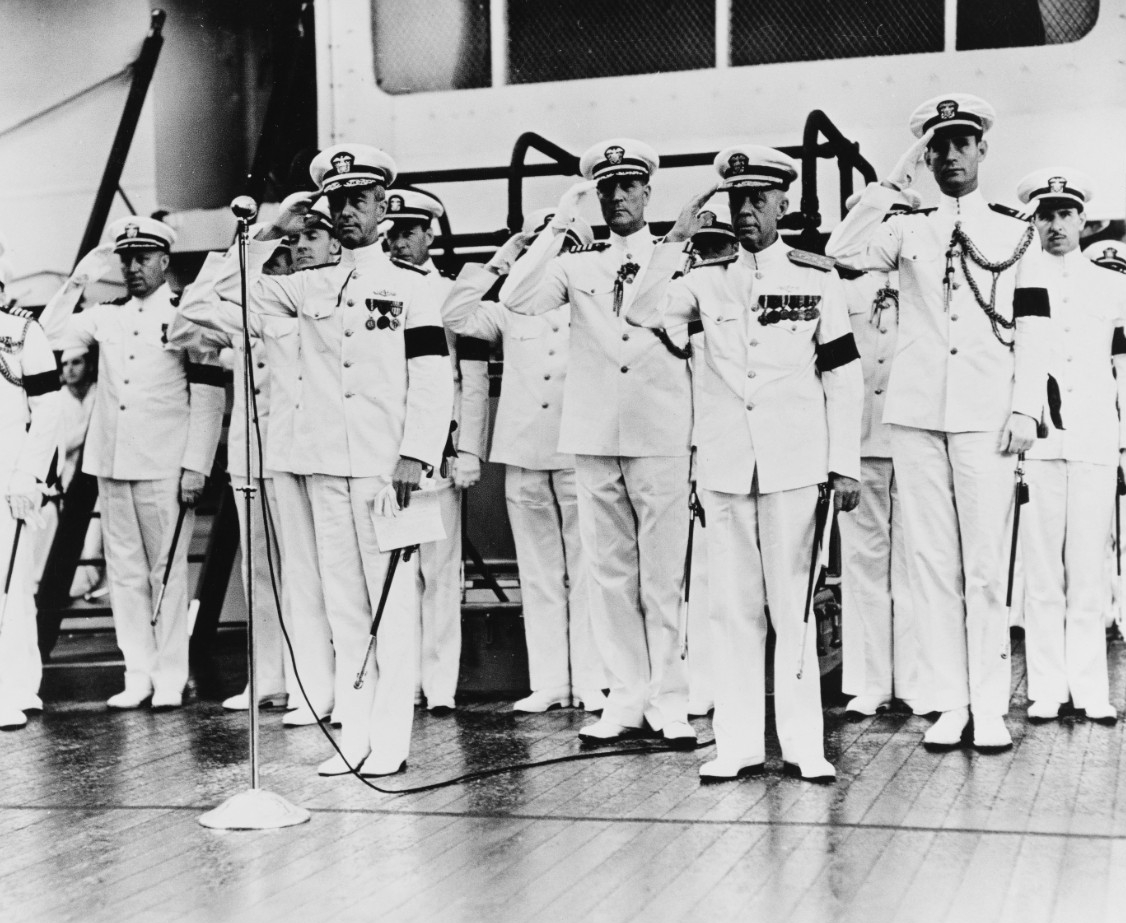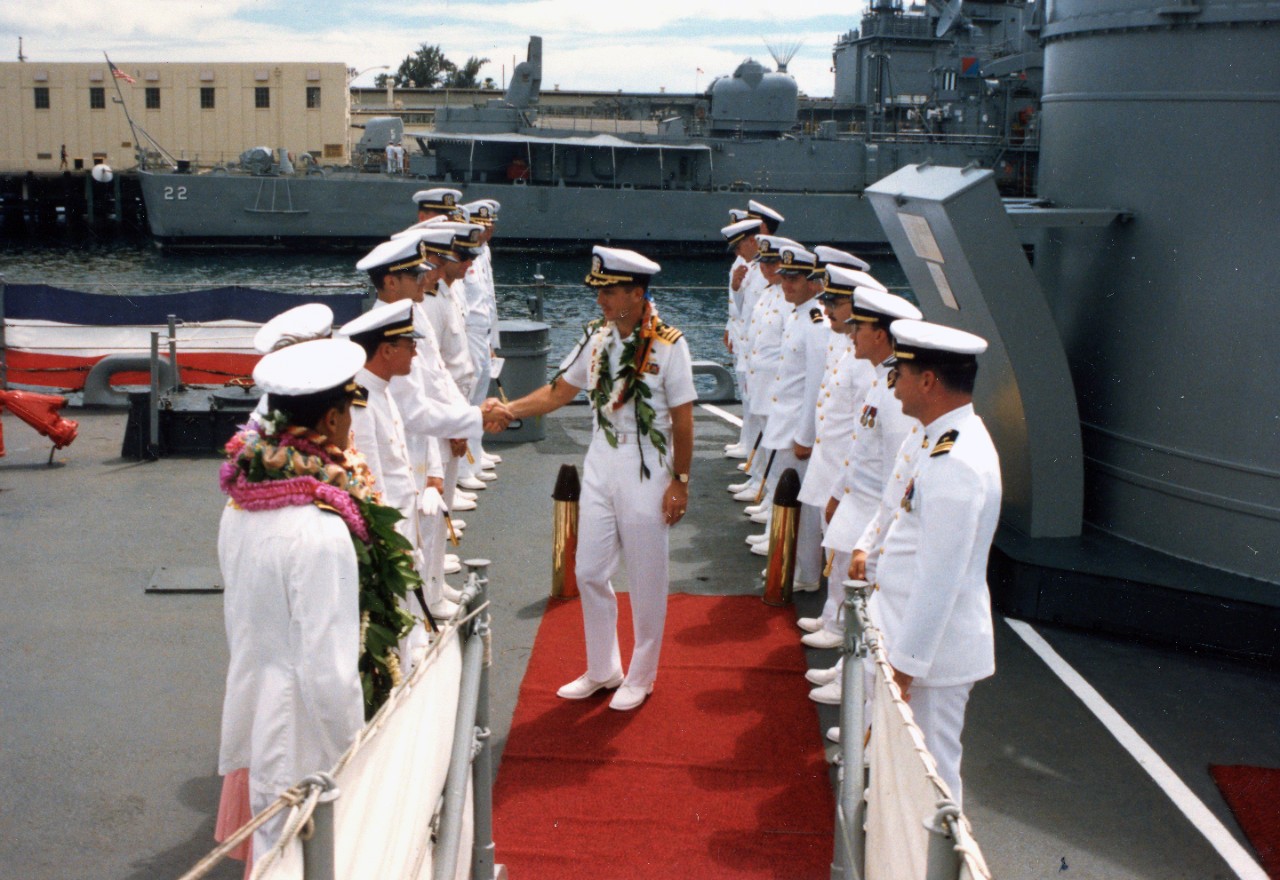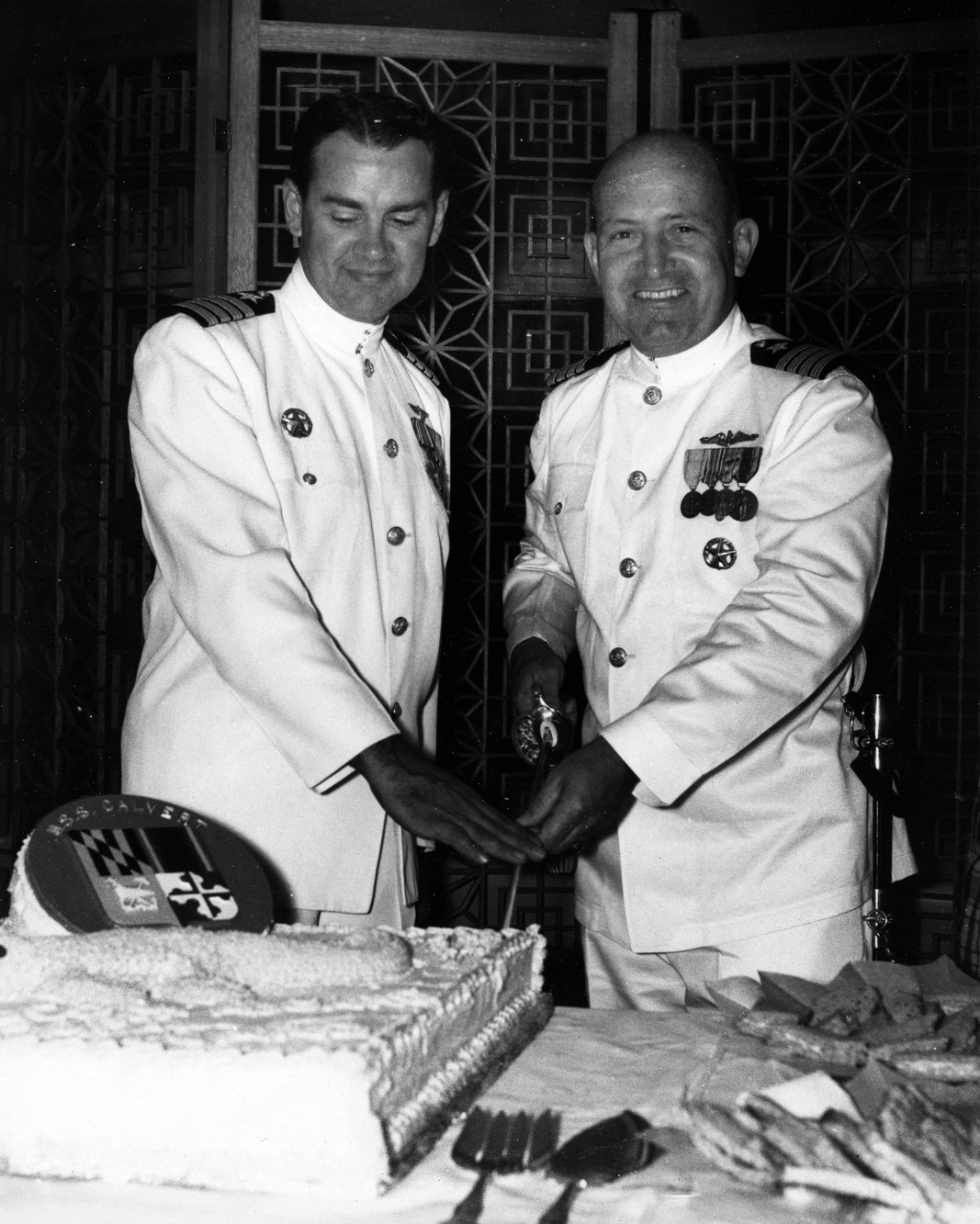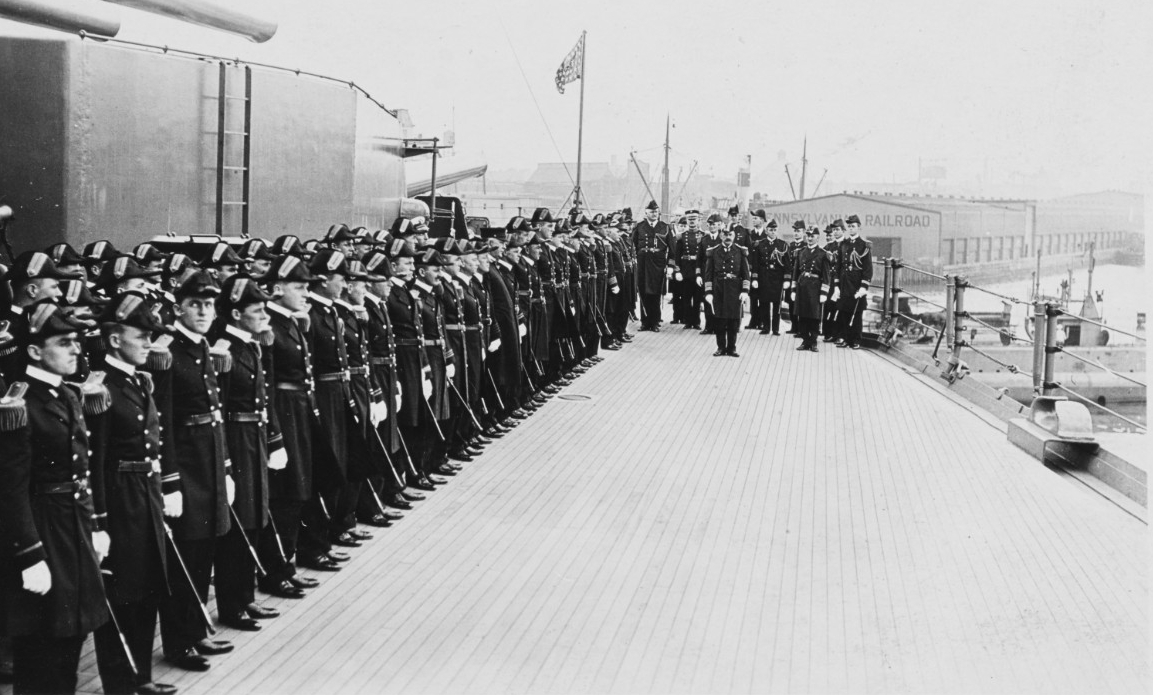Change of Command Ceremony
The line officer of today's U.S. Navy looks forward to the time when – with added years and varied experience in the sea service ─ he or she will be ordered to command a ship. The order will stem from the Chief of Naval Personnel in approximately these words: "Proceed to the port in which USS Advance may be and upon arrival, report to your immediate superior in command, if present, otherwise by message, for duty as commanding officer of USS Advance."
At this point the new commanding officer will be participating, for the first time actively, in the "change of command" ceremony. What is the tradition of the change of command?
Very little has been written on the subject. The basic sources, outside of custom and tradition, are Navy regulations. The first mention of the ceremony in Navy regulations occurs during the Civil War; there has been little change in the procedures of the change of command since then.
The 1865 edition of Regulations for the Government of the United States Navy in Article 3, Section 1, no.72, says:
When a Commodore, Captain, or any other officer is appointed to the command of a single vessel, he will, if she be at a navy yard and ready to be transferred to him, make, in company with the Commanding Officer of the yard, or some other proper officer or officers appointed by such Commanding Officer for the purpose, a thorough personal examination of her, and inform himself as to all her arrangements and preparations of equipment; after which the transfer is to be formally made in the presence of as many of her officers and crew as can be assembled, before whom his appointment is to be read; and then the vessel is to be placed in commission by hoisting her ensign and pendant. If the vessel is already in commission, he is, nevertheless to examine her and inform himself as stated above, and to read to her officers and crew his appointment.
The 1990 edition of United States Navy Regulations in Article 0807, says that a "commanding officer about to be relieved of his command will: (a) inspect the command in company with the relieving officer, (b) In the case of a ship, and within other commands as appropriate, cause the crew to be exercised in the presence of both the commanding officer and the relieving officer at general quarters and general drills, unless conditions render it impracticable or inadvisable." Among other things, the outgoing occupant turns over all keys to the incoming commanding officer.
Relating specifically to the change of command ceremony is the regulation that at the time of turning over command the outgoing commanding officer will "call all hands to muster, read the order of detachment and turn over command to his or her relief, who will read the orders of relief and assume command. At shore activities, this procedure may be modified as appropriate."
The new commanding officer, after reporting to the senior officer afloat, and to the type, division or task force commander or other prospective senior in the chain of command, reports in turn aboard his or her ship to the commanding officer.
The change of command ceremony itself is under way when all hands are called to quarters at the appointed hour. On a destroyer, the crew usually musters on either the forecastle or fantail. Sufficient room is left for the ceremony. The uniform is service dress, blue or white.
When the executive officer reports the crew at quarters, the retiring commanding officer and his relief proceed to the ceremonial area together. If the retiring officer wishes to say a few words to the crew that he or she is leaving, this is the proper time. After a brief speech, the retiring officer faces forward and reads the orders of detachment to the officers and crew. The retiring officer then steps back. The new commanding officer steps forward and reads his or her orders to command, after which it is appropriate to face about, salute the retiring officer, and say, "I relieve you, sir" or "I relieve you, ma'am."
The retiring officer then leaves ship's company with its new skipper, who may or may not give a brief talk to the personnel of his or her new command. The new commanding officer will include a statement that standing orders will remain in effect. The new skipper then turns to and orders the executive officer to continue with ship's routine.
The ceremony is over and he or she is now commanding officer of USS Advance.
Navy regulations also specify that "the officer relieved, though without authority after turning over the command, is, until final departure, entitled to all ceremonies and distinctions accorded a commanding officer."
Additional Reading
Sample Change of Command Ceremony brochure
Change of Command U.S. Naval Station Roosevelt Roads
Change of Command Commander U.S. Naval Support Force Antarctica

